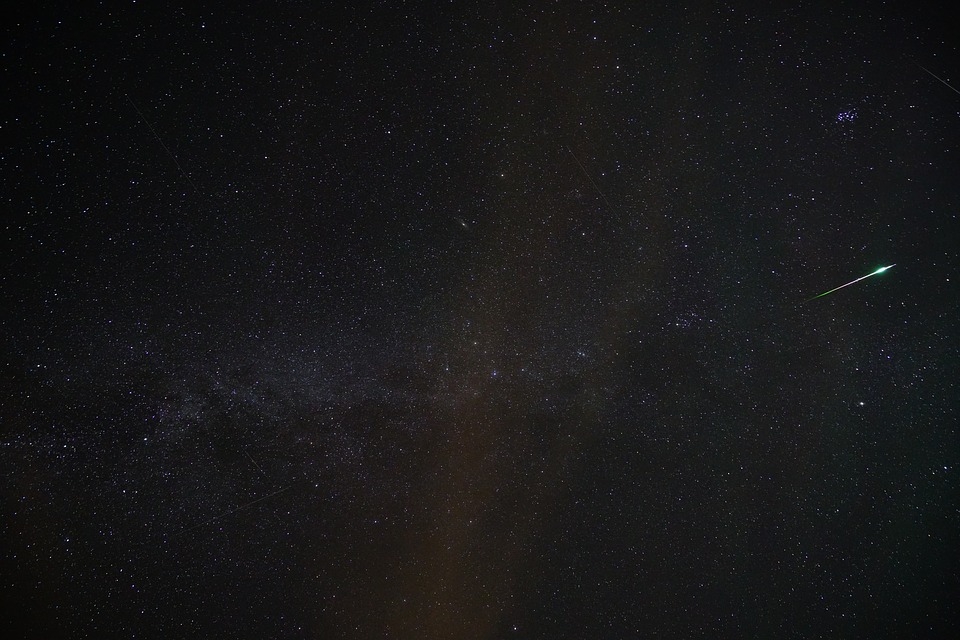Asteroids usually have a very small chance of colliding with Earth, especially massive space rocks that travel through space. However, the same could not be said for the much smaller ones, which wind up meeting our planet’s atmosphere, as witnessed by residents on the west coast of the United States.
Last week, on October 23, a fireball was seen over the night skies of the US west coast, and residents in the states of Oregon, Washington, and California were able to witness this phenomenon. The International Meteor Organization since received hundreds of reports of the fireball that was seen. One witness described the fireball as “green and dramatic” when it streaked the skies until it disintegrated. The witness initially thought it might have been a firework, but eventually realized that it was a meteor.
Another witness also echoed the reports of other witnesses, describing how big the fireball was, and that it was big enough to be mistaken as manmade. Other witnesses have also noted that it looked like a very big shooting star.
Fireballs are a result of asteroids coming into contact with the Earth’s atmosphere. The air seeps into its cracks and crevices, pushing it apart and resulting in an explosion. According to the IMO, asteroids or space debris that are larger than a millimeter could bring about a bright flash when it moves through the skies and disappears on its way down.
Onto another asteroid, last week also saw a space rock, known as 2020 UF3 pass by Earth on Thursday, October 22. UF3 passed by Earth as close as 47,000 miles, which is around 11 percent of the distance between our home planet and the Moon. NASA has revealed that UF3 was traveling through space at a rate of 22 kilometers per second or over 79,000 kilometers per hour. The astronomers from the Virtual Telescope Project has described this asteroid as the fastest asteroid that they have ever observed.
“The near-Earth asteroid 2020 UF3 safely came very close to our planet, reaching a minimum distance from the Earth of about 42,000 km, 11 percent the average distance of the Moon. It was moving extremely fast in the sky, setting a record for the Virtual Telescope facility,” said the astronomical group.



 How do airplanes fly? An aerospace engineer explains the physics of flight
How do airplanes fly? An aerospace engineer explains the physics of flight  Why now is the time to address humanity’s impact on the moon
Why now is the time to address humanity’s impact on the moon  Dark energy is one of the biggest puzzles in science and we're now a step closer to understanding it
Dark energy is one of the biggest puzzles in science and we're now a step closer to understanding it  Larger and more frequent solar storms will make for potential disruptions and spectacular auroras on Earth
Larger and more frequent solar storms will make for potential disruptions and spectacular auroras on Earth  Tatahouine: 'Star Wars meteorite' sheds light on the early Solar System
Tatahouine: 'Star Wars meteorite' sheds light on the early Solar System  The brightest object in the universe is a black hole that eats a star a day
The brightest object in the universe is a black hole that eats a star a day  Could a telescope ever see the beginning of time? An astronomer explains
Could a telescope ever see the beginning of time? An astronomer explains  Orbital resonance − the striking gravitational dance done by planets with aligning orbits
Orbital resonance − the striking gravitational dance done by planets with aligning orbits  Customizing mRNA is easy, and that's what makes it the next frontier for personalized medicine − a molecular biologist explains
Customizing mRNA is easy, and that's what makes it the next frontier for personalized medicine − a molecular biologist explains  The mystery of consciousness shows there may be a limit to what science alone can achieve
The mystery of consciousness shows there may be a limit to what science alone can achieve  Genetic diseases: How scientists are working to make DNA repair (almost) a piece of cake
Genetic diseases: How scientists are working to make DNA repair (almost) a piece of cake  Spacesuits need a major upgrade for the next phase of exploration
Spacesuits need a major upgrade for the next phase of exploration  Why some people don't trust science – and how to change their minds
Why some people don't trust science – and how to change their minds  Our survey of the sky is uncovering the secrets of how planets are born
Our survey of the sky is uncovering the secrets of how planets are born  Black hole, neutron star or something new? We discovered an object that defies explanation
Black hole, neutron star or something new? We discovered an object that defies explanation  Six space missions to look forward to in 2024
Six space missions to look forward to in 2024 






























